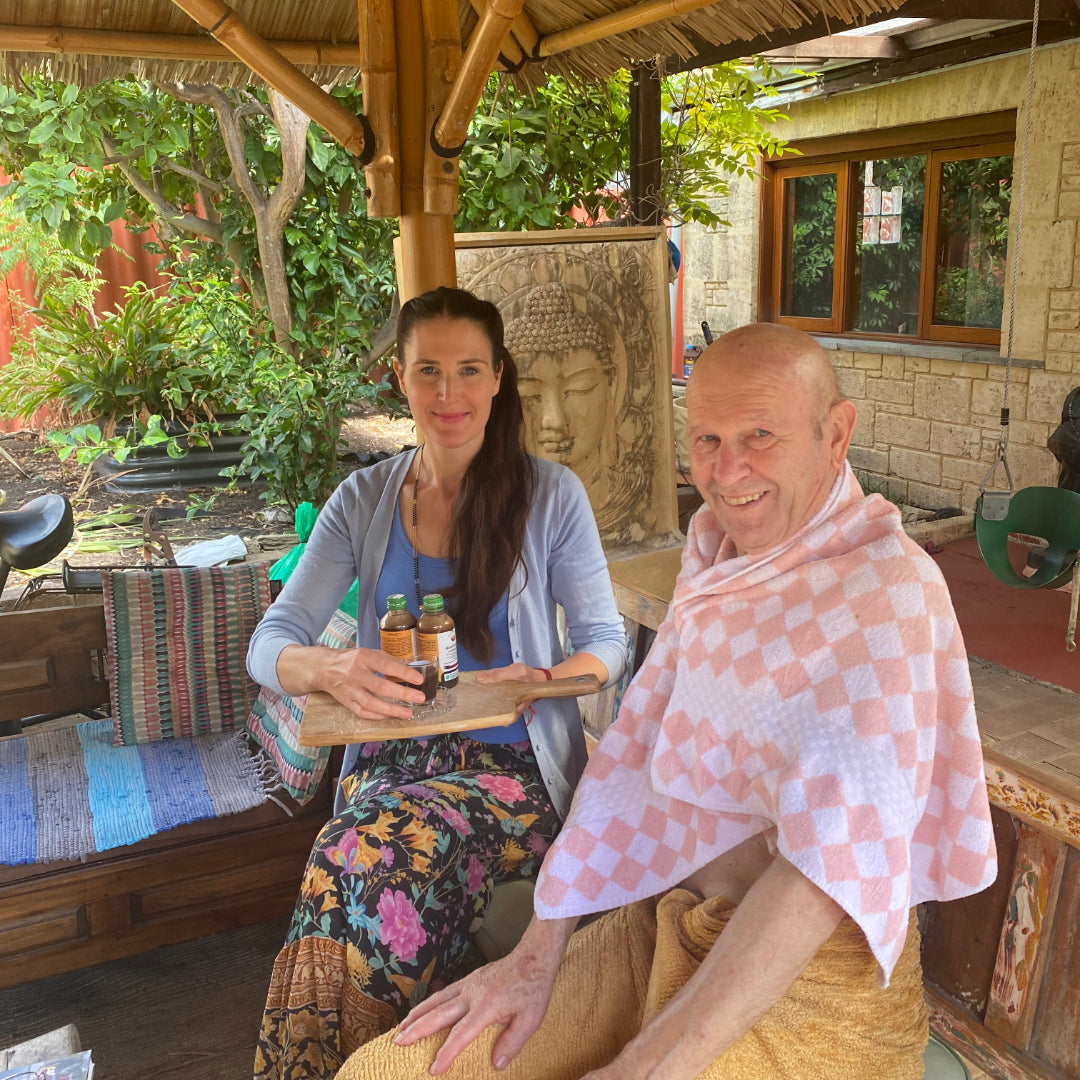Surgery from the Ayurvedic perspective
April 24, 2024 2 min read

t has only been three weeks since my father’s hip surgery. He is doing really well!
Interesting to follow the process of a surgical intervention nowadays and then read the detailed information in the Sushruta Samhita about pre and post surgical care 📚
Hmmh, we could wonder if we are moving backwards. Did you ever receive dietary and lifestyle advice before your surgery? We would love to hear your thoughts on this. 👇
In the Sushruta Samhita, an ancient text on surgery and Ayurvedic medicine, the surgical process is divided into three main stages:
- Poorva Karma (pre-operative procedures)
- Pradhana Karma (the main surgical procedure)
- Paschat Karma (post-operative procedures). Here’s an overview of each stage:
1. Poorva Karma (Pre-operative procedures):
• Proper diagnosis of the condition
• Patient Preparation: Preparing the patient mentally and physically for surgery. This may include counselling, dietary modifications, lifestyle changes, and treatments to optimize the patient’s health before the procedure.
• Selection of Surgical Technique: Choosing the appropriate surgical technique based on the patient’s condition, the expertise of the surgeon, and other factors.
• Sterilization: Ensuring that surgical instruments, equipment, and the operating environment are sterile.
• Anesthesia: Administering anesthesia to ensure the patient is comfortable and pain-free during the surgery.
2. Pradhana Karma (Main surgical procedure):
• The main surgical procedure itself. Sushruta describes various surgical techniques for different ailments, including incisions, excisions, suturing, and setting fractures.
3. Paschat Karma (Post-operative procedures):
• Wound Care: After surgery, this involves dressing changes, application of medicinal preparations, and monitoring for any signs of complications.
• Pain Management: Providing pain relief to the patient through herbal remedies, dietary modifications, and other Ayurvedic treatments.
• Diet and Lifestyle: Recommending a suitable diet and lifestyle modifications to support recovery and prevent complications. This may include dietary restrictions, rest, and gradual resumption of activities.
• Follow-up Care: Regular follow-up visits with the surgeon or healthcare provider to monitor the patient’s progress, assess wound healing, and any concerns, and adjust the treatment plan.
• Rehabilitation: Depending on the nature of the surgery and the patient’s condition, rehabilitation exercises and therapies may be prescribed to restore function, mobility, and strength.
These stages represent a comprehensive approach to surgical care outlined in the Sushruta Samhita, with a focus on ensuring optimal outcomes for the patient. ❤️❤️❤️
Wow how amazing is the classical Ayurvedic text.
Thank you, Acharya Sushruta 🙇♀️🙇♀️🙇♀️
Subscribe
Sign up to get the latest on sales, new releases and more …

